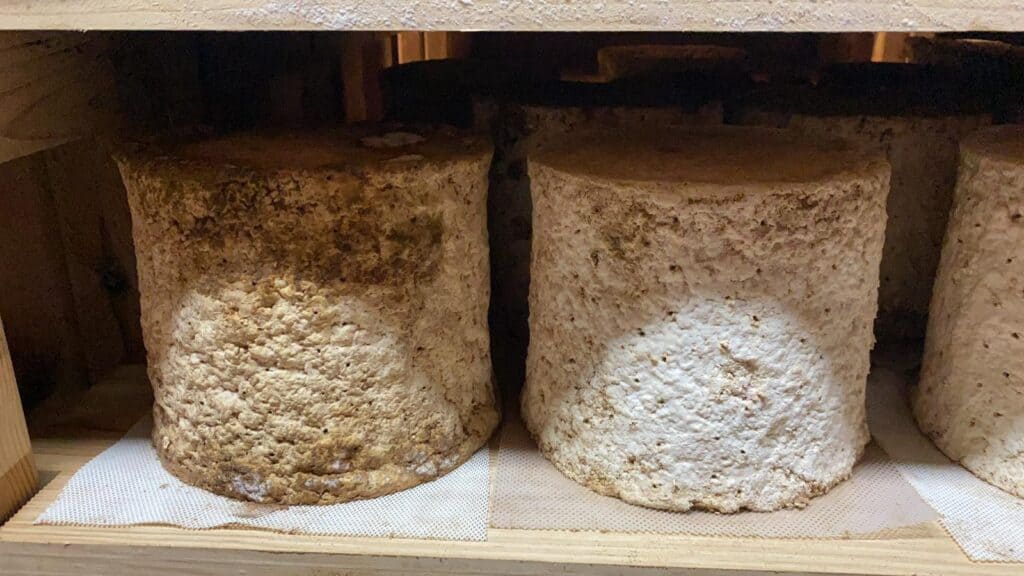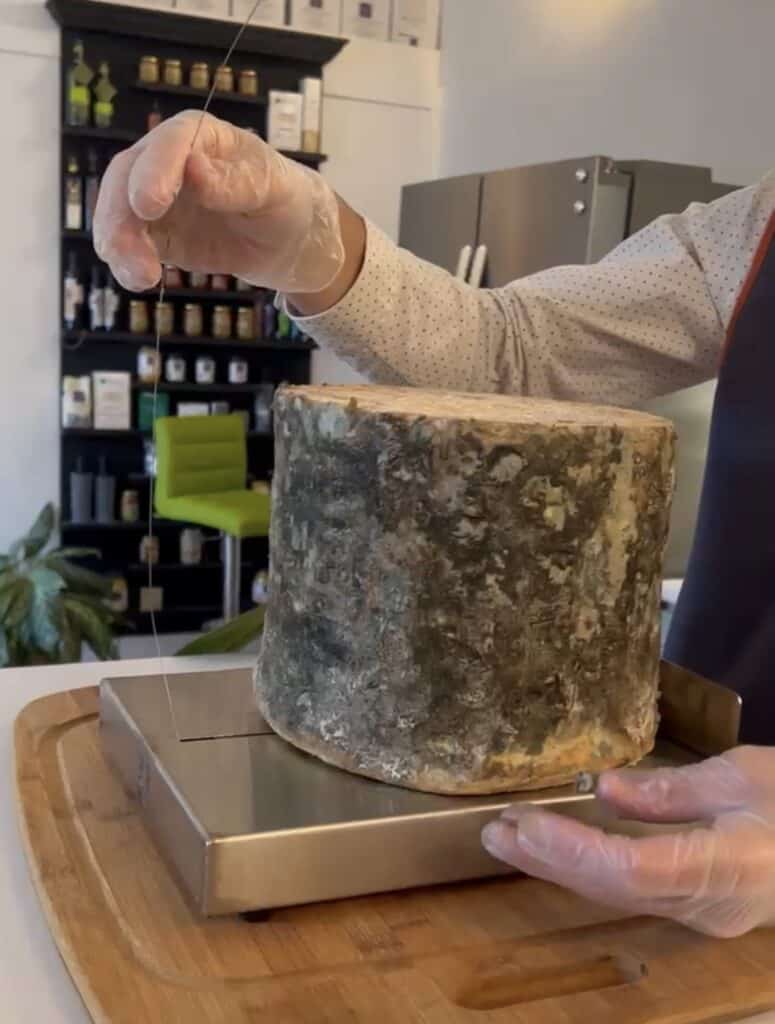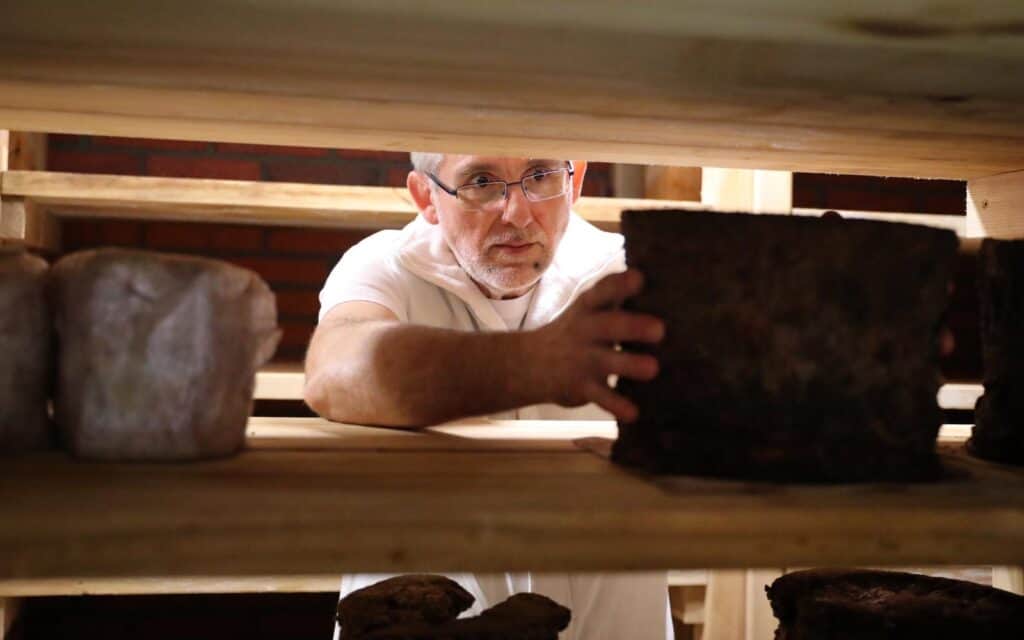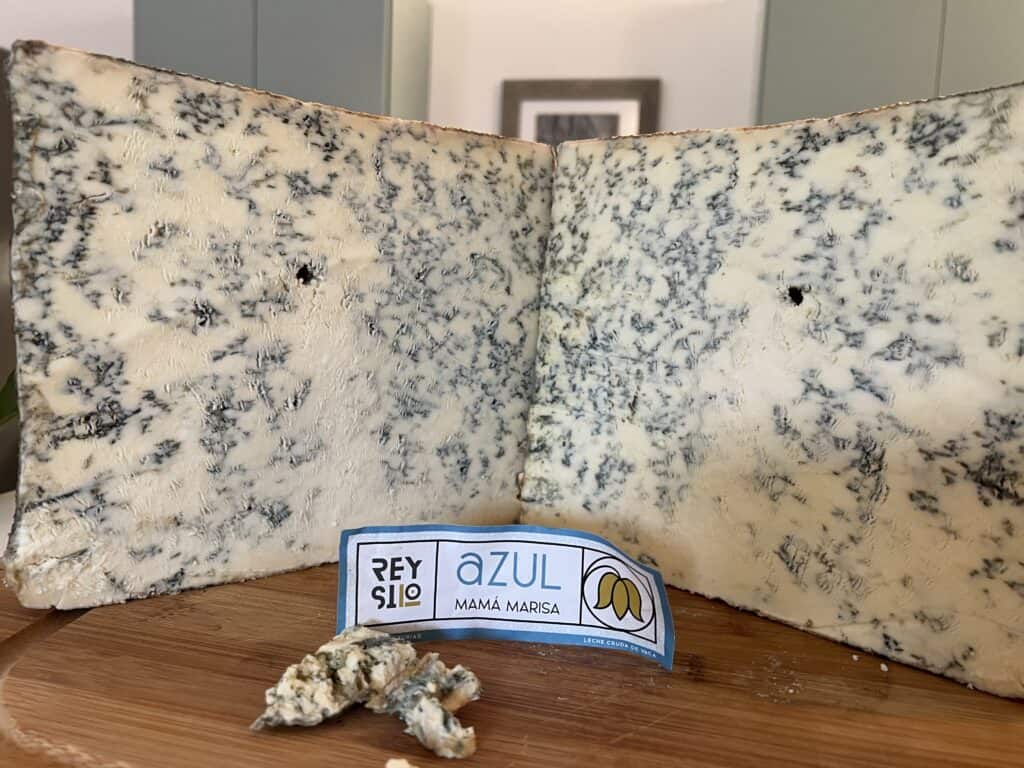In Spain, ‘Artesanal’ means raw milk. And that is what Rey Silo has been doing for twenty years: making very distinct raw milk cheeses including their newest cheese, a blue, named “MAMÁ MARISA”. This cheese was crafted to express two qualities they deem essential in cheese: complexity and balance. Until now, the most recognized blue cheese from northern Spain is Cabrales and Rey Silo dreamt of making a blue version that is softer, creamier, exceptionally complex, well-balanced, and of course, made with raw cow’s milk.
“The human being loves complexity. We need complexity in all things. We hate the dull,” says Ernesto Madera Lopez – master cheesemaker at Rey Silo. “These are the most important things in life. If one flavor (in a cheese) is very prominent you will destroy the complexity. We love complexity in people, in perception. It is the same with wine, you want something up front, something that lingers, something that conjures up a memory, a smell, a flavor.”

In 2005, Ernesto and his business partner, Pascual Cabana, had a vision to reinterpret classic cheeses from Asturias and started Rey Silo Quesería Artesanal de Pravia. At Rey Silo, the milk is at the heart of their cheeses. They use only raw milk from cows of farms in the village of Oviñana a short distance from Pravia.
Ernesto’s cheesemaking draws both on his background in engineering and his innovative spirit. He approaches the skill of cheesemaking with equal parts pragmatism and creativity. In preparation for conceiving MAMÁ MARISA, Ernesto traveled to many other dairies to learn relevant cheesemaking techniques, returning to Rey Silo to design new curd vats and cheese molds for an aging cellar built specifically for MAMÁ MARISA. He perfected the recipe beginning by lightly warming the curds before cutting them by hand. Next, Ernesto introduced a blue-greenish Penicillium roqueforti into the interior of the cheese. Then he drained, crumbled, salted, and kneaded before adding it to molds which he turns by hand.
The location of the dairy in Pravia is special due to its proximity to the banks of the Nalon River. The river flows through the lush and mountainous Asturias region and lends an ideal humidity to the cellars for aging Rey Silo’s cheeses. Ernesto designed his innovative cheesemaking equipment to use in tandem with nature’s offerings, including the river, and the natural vegetation of the Asturias region which is the essence of the cow’s milk.
 The cows graze on a variety of wildflowers, grasses and legumes native to the area. This is a natural process, but, of course, science has its role, too. A ruminant’s system needs a balanced diet of twenty amino acids to produce the protein needed to make cheese, therefore Rey Silo has a nutrition checklist for the cows. Fortunately, this northern region has a high rainfall and a lush climate with a very short window of high summer heat–unlike southern areas of Spain–providing nearly year-round vegetation for grazing.
The cows graze on a variety of wildflowers, grasses and legumes native to the area. This is a natural process, but, of course, science has its role, too. A ruminant’s system needs a balanced diet of twenty amino acids to produce the protein needed to make cheese, therefore Rey Silo has a nutrition checklist for the cows. Fortunately, this northern region has a high rainfall and a lush climate with a very short window of high summer heat–unlike southern areas of Spain–providing nearly year-round vegetation for grazing.
There were many obstacles along the way to perfecting Mama Marisa, including economic down turns, the pandemic, the war in Ukraine. But, the biggest challenge to their dairy turned out to be a blessing in disguise. Catastrophic European flooding in 2018 destroyed Rey Silo’s equipment, aging cellar, and all their cheese including the new blue cheese that was finally ready for market. All that exquisite MAMÁ MARISA cheese—a decade in the making– was lost. Rather than discouragement, Ernesto took the flooding as an opportunity to improve even further the aging system for MAMÁ MARISA.
“We had to start from scratch, we lost everything, but this was just one of many hurdles along the way,” Ernesto. He adds with a shrug, “It was just another one. Just more work.”

His tone is one of, as always, logical and unwavering determination, with the flexibility and vision of an artist.
He found new inspiration in the local architecture of Asturias, drawing on the idea of radiant floor heating found in many of the local homes. However, rather than pipes with hot water in the floors, Ernesto added pipes for cold water behind the cellar’s brick walls. The result was a climate-controlled room mimicking the conditions of a natural cave with the perfect humidity for the long fermentation needed for maturing MAMÁ MARISA cheese.
Finally–after so much resilience and endurance –MAMÁ MARISA blossomed into Ernesto’s vision: a cheese that is creamy, balanced, complex, aromatic, and most certainly blue. Rey Silo decided to name the cheese after the mother of an important and well-known Chef from Asturias, their region, who helped inspire their vision and bring it to fruition by way of collaboration. Chef José Andrés, revered in Spain, USA and worldwide for his work with World Central Kitchen, dedicated this cheese to his mother, Marisa, who taught her son at a young age the wonder of cheese, how to eat and enjoy the flavors, and the complexities of the local cheeses.
 Ernesto’s favorite way to eat MAMÁ MARISA? “With bread. With good bread,” he says, then adds with a small chuckle, “I love bread.”
Ernesto’s favorite way to eat MAMÁ MARISA? “With bread. With good bread,” he says, then adds with a small chuckle, “I love bread.”
Rogers Collection is proud to import an array of cheeses from Rey Silo and excited to announce Mama Marisa and share the passion and talents of Ernesto. We invite you to taste their cheeses, close your eyes, and delight in the flavors with good bread, your favorite Asturian cider, and perhaps create or conjure up a memory.
Written by Leska Tomash